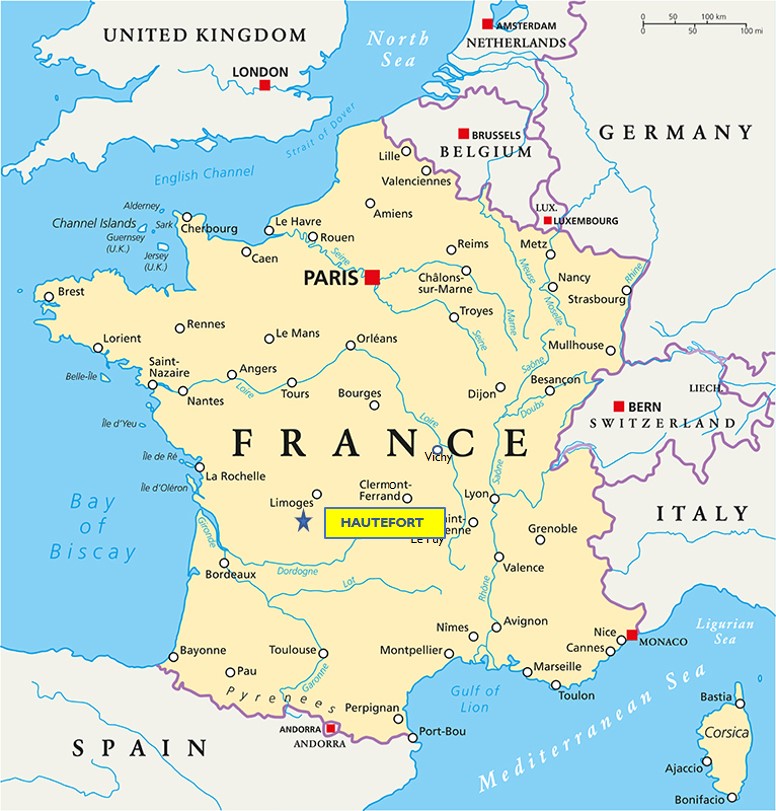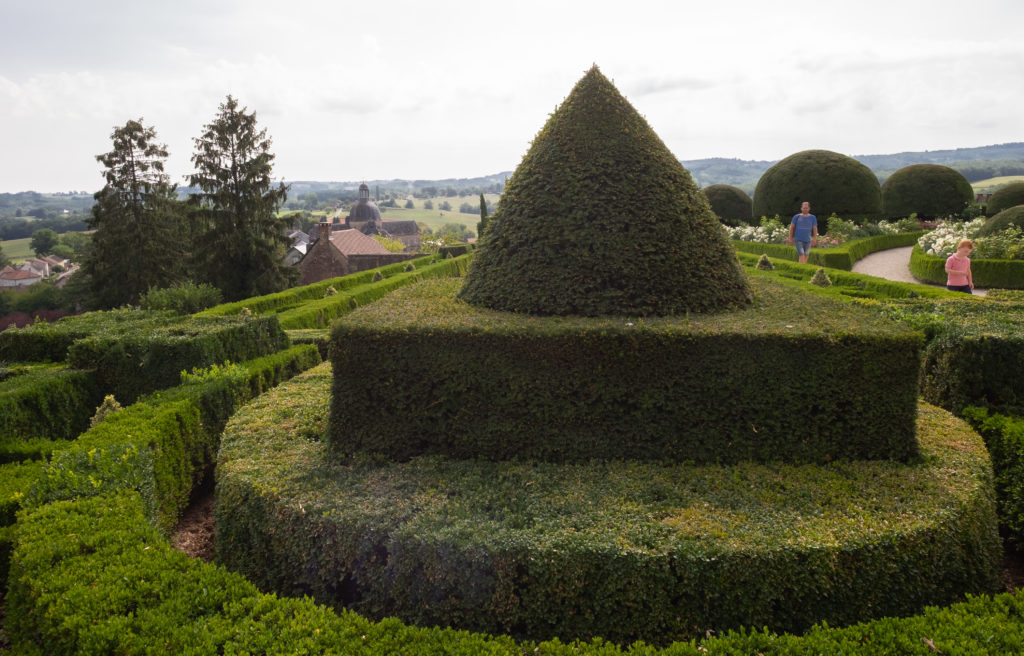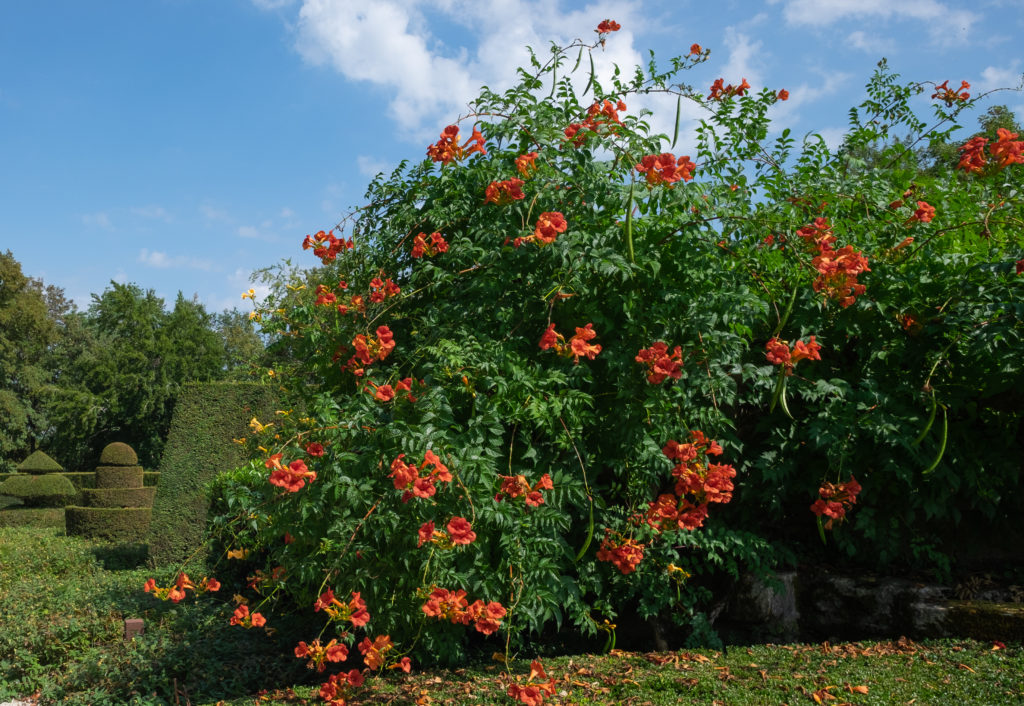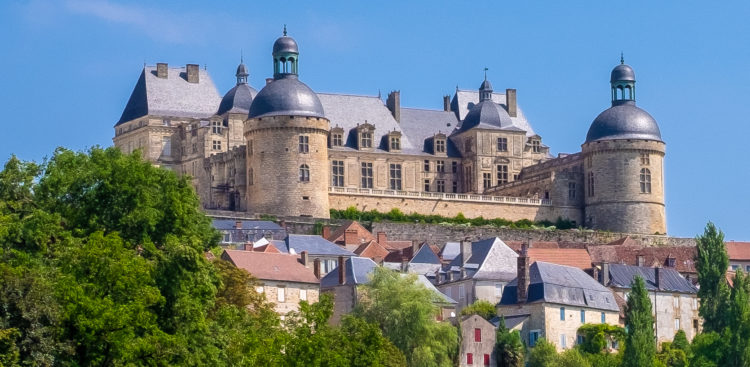Not long ago we visited the excellent Museum of Medical History at Hautefort – a fascinating (sometimes scary) collection of medical instruments and treatment methods from medieval to modern. But that’s definitely not the main reason to visit the little village of Hautefort in the Dordogne in the deep heart of France.
Most people come here for the castle. In fact, this whole area is noted for its spectacular castles – the great defensive fortresses at Castelnaud and Beynac are testaments to the violence and instability that wracked this region during the Hundred Years War and the Wars of Religion. But even in an area where there are many spectacular chateaux, the Chateau de Hautefort stands out as one of the best.
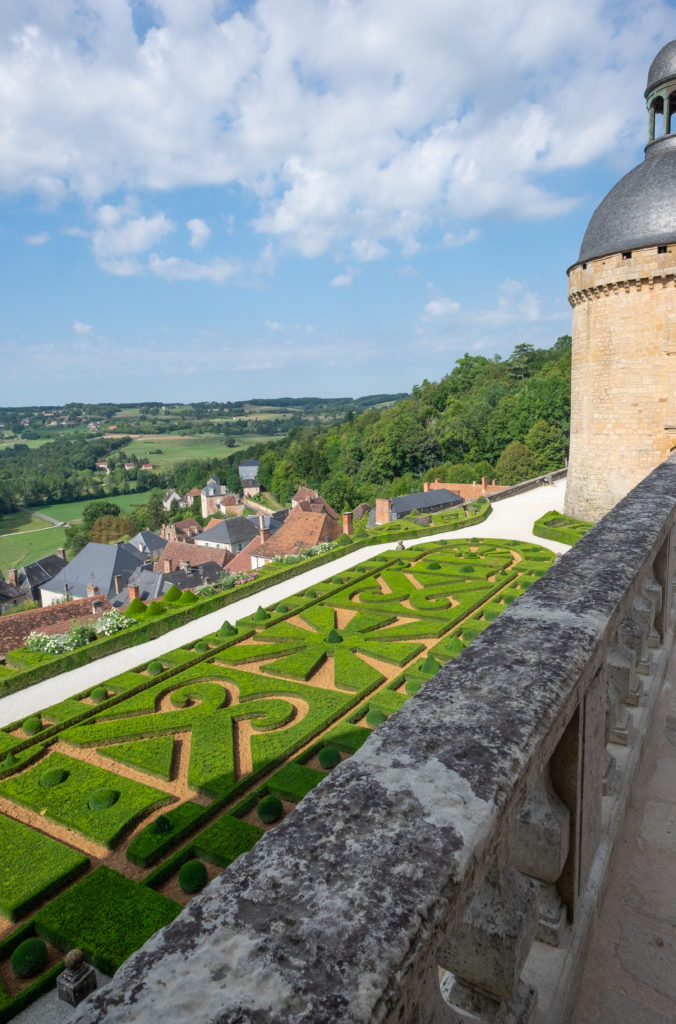
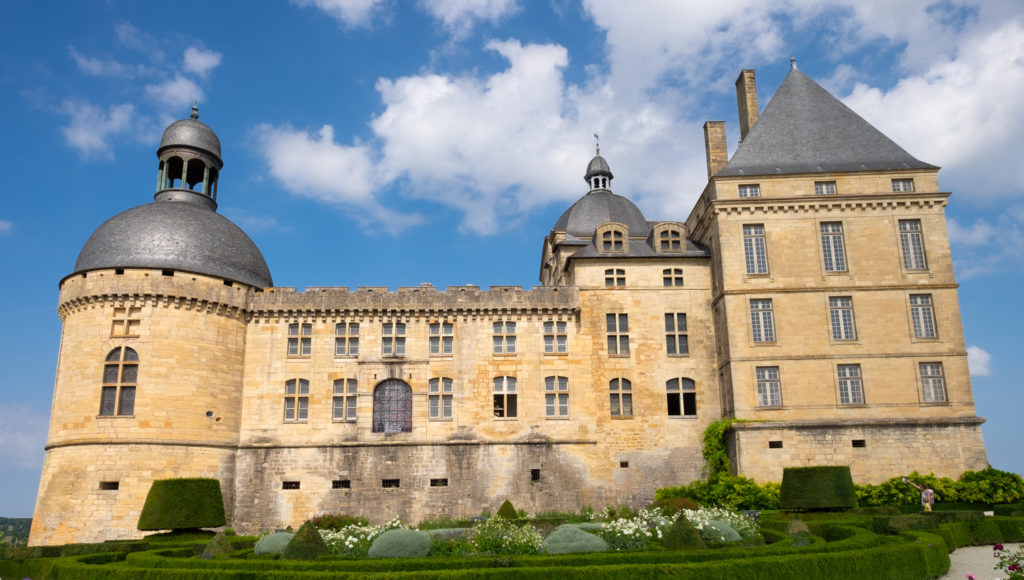
A chateau built on an ancient site
Your first impression may remind you more of the classic palaces that line the Loire River valley to the north. Hautefort looks refined and genteel, not forbidding or military. But in fact the buildings we see now stand on the ruins of a defensive castle built on this site a thousand years ago – and there was likely even a military camp here when Roman armies occupied the region before that.
Remnants of that original castle still exist; you can see the drawbridge and defensive turrets that were challenged in the 12th century when Bertran de Born drove his brother Constantin out, or again when Richard the Lion Heart laid siege to the building and captured it back for Constantin. (It didn’t last – Betran pledged his support to King Henry II of England in exchange for control of Hautefort. Dante mentions him as one of the characters in Hell in the Divine Comedy.)
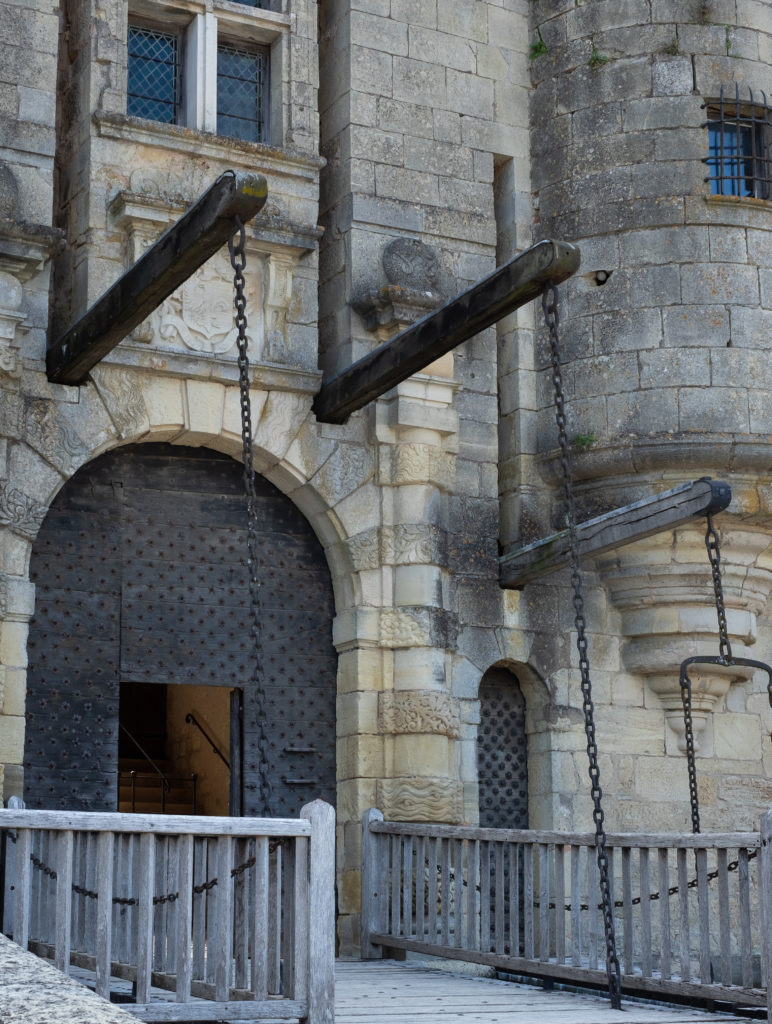
Rise of a classical masterpiece
The transformation of the castle into a fine Renaissance country house began in the 1600s, when the new owners were elevated to the status of Marquis by King Louis XIII. Under a succession of fine French architects, great galleries were added, parquet floors were installed, Aubusson tapestries and rich silks were hung, beautiful mantles were carved for the massive fireplaces.
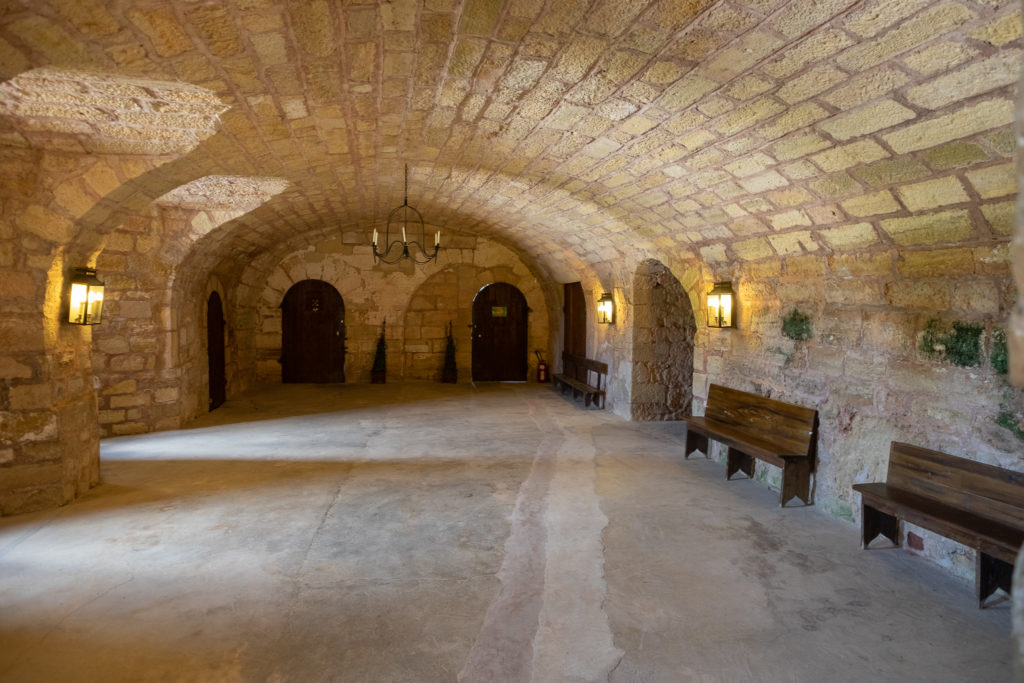
Beneath this classical palace, an extensive infrastructure of tunnels was carved into the rock for the kitchens, cellars, storerooms and passageways required to operate a building of this size.
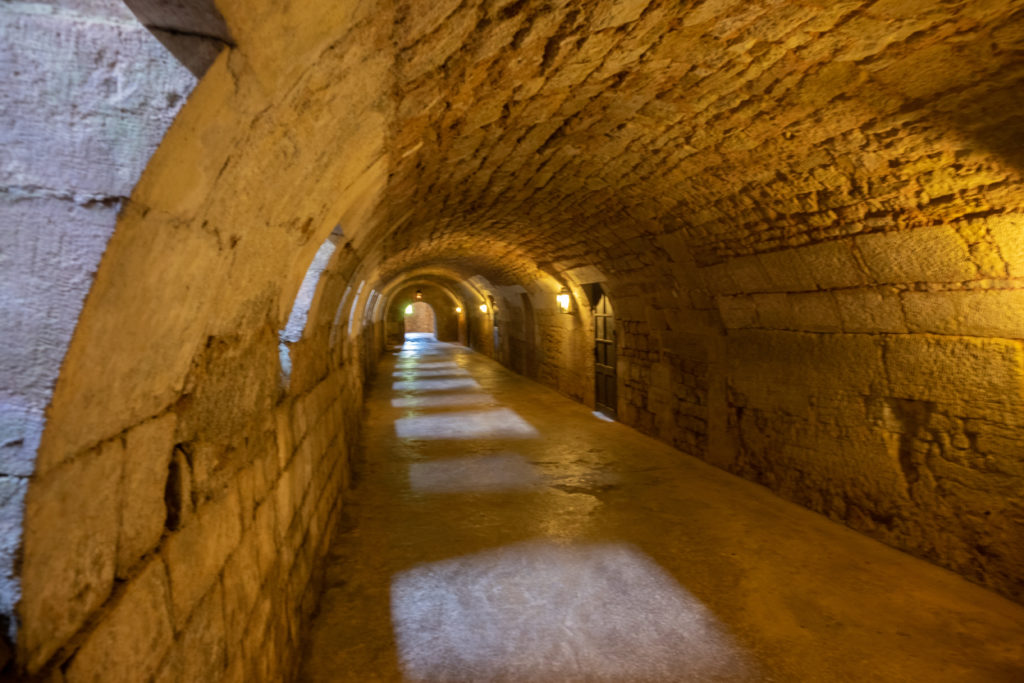
The gardens full of precisely trimmed boxwood and yew hedges were a later arrival, started in 1857 by the famous landscape architect, the Count of Choulot, although they were reconstituted and expanded when the place was restored in the 20th century. In any case, they are one of the most remarkable reasons to visit here – they’re beautiful enough to be classified as a national historical monument on their own merit!
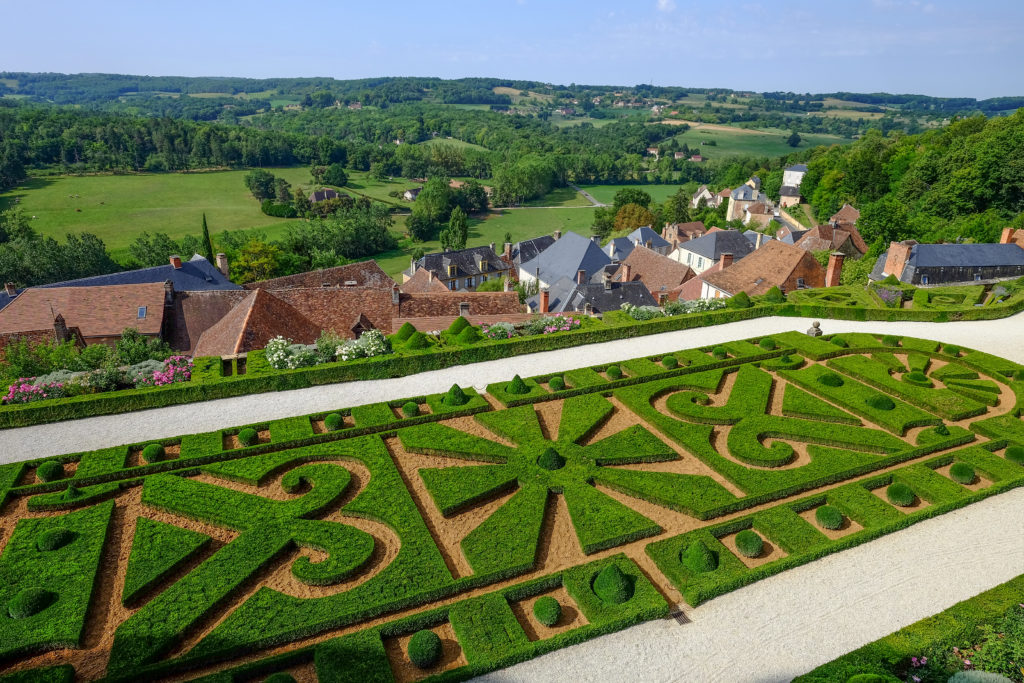
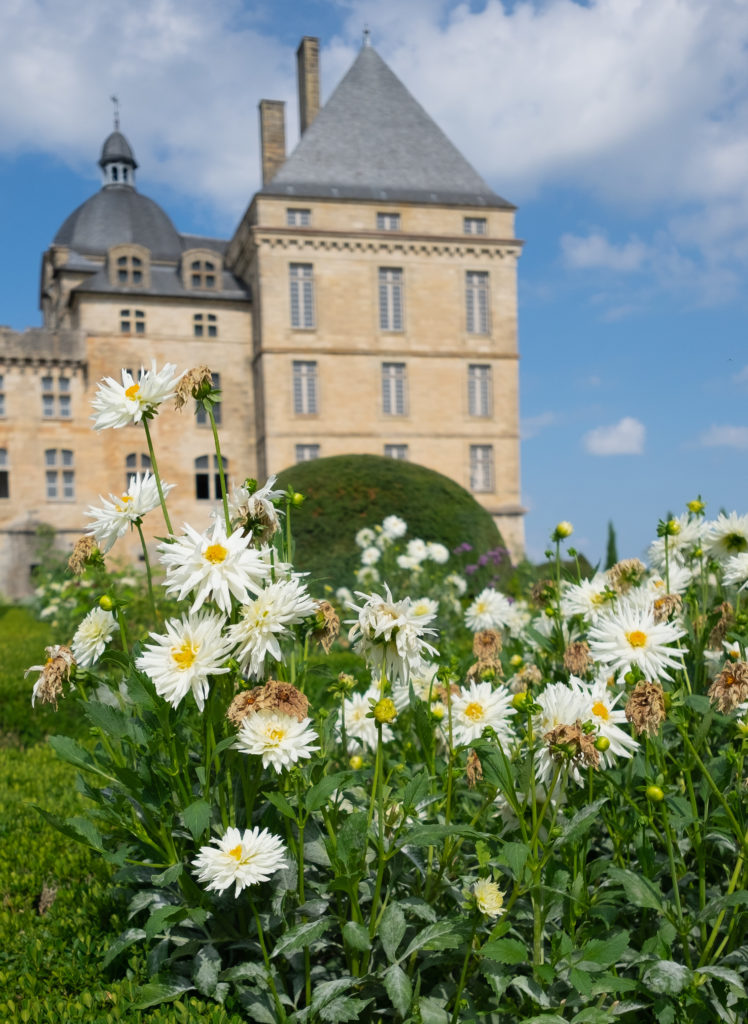
The remarkable character of the Hautefort family
One of the most striking elements of this castle’s story is the relationship that developed between the Marquis who owned the palace and the people of the surrounding community. One in particular stands out. While France was still governed in a mostly feudal system, with nobles routinely exploiting the people and lands they controlled, Jacques-François de Hautefort (Marquis from 1640 to 1680) went out of his way to give support and comfort to the poor in his domain. The great hospital that now houses the Medical Museum at the bottom of the hill? Jacques-François had it built in 1669 with the specific mission of serving poor patients in the region.
This remarkable relationship seems to have been transmitted down through the family decades after the death of Jacques-François, because when an army of the French Revolution came to destroy Hautefort in 1792, the people of the village “melted their copper pots and turned them into arms” to stand up in defense of the chateau! (The Marquis of Hautefort managed to escape to Scotland, although his younger brother and his brother’s wife were arrested and sent to the guillotine in Paris in 1794.)
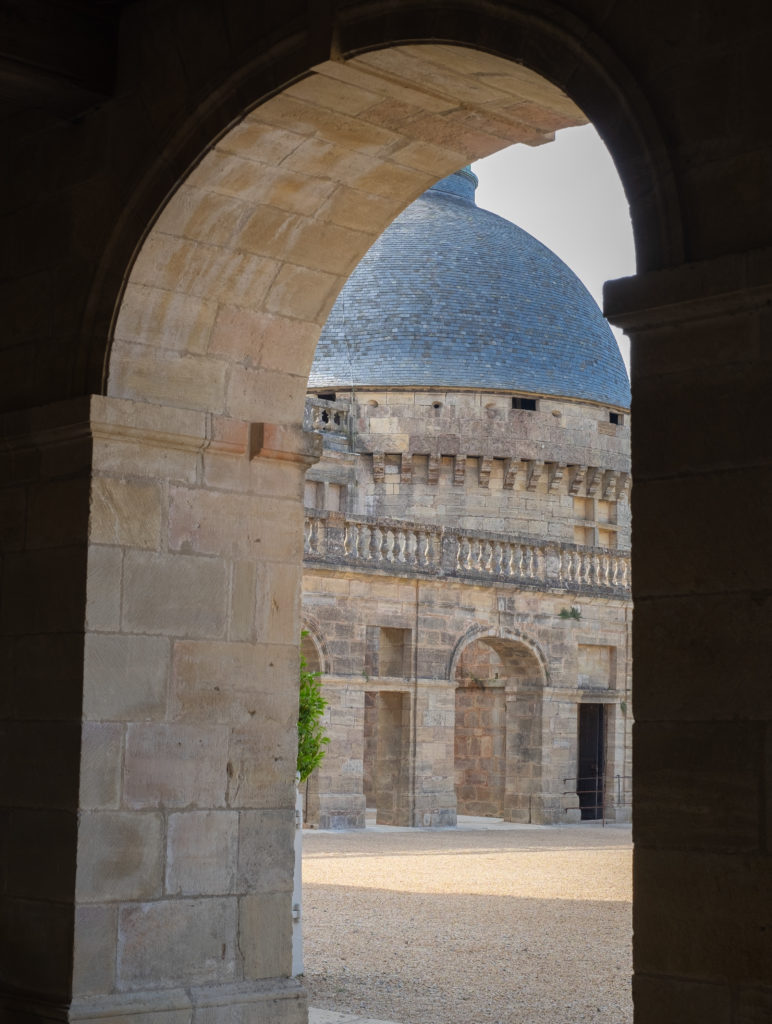
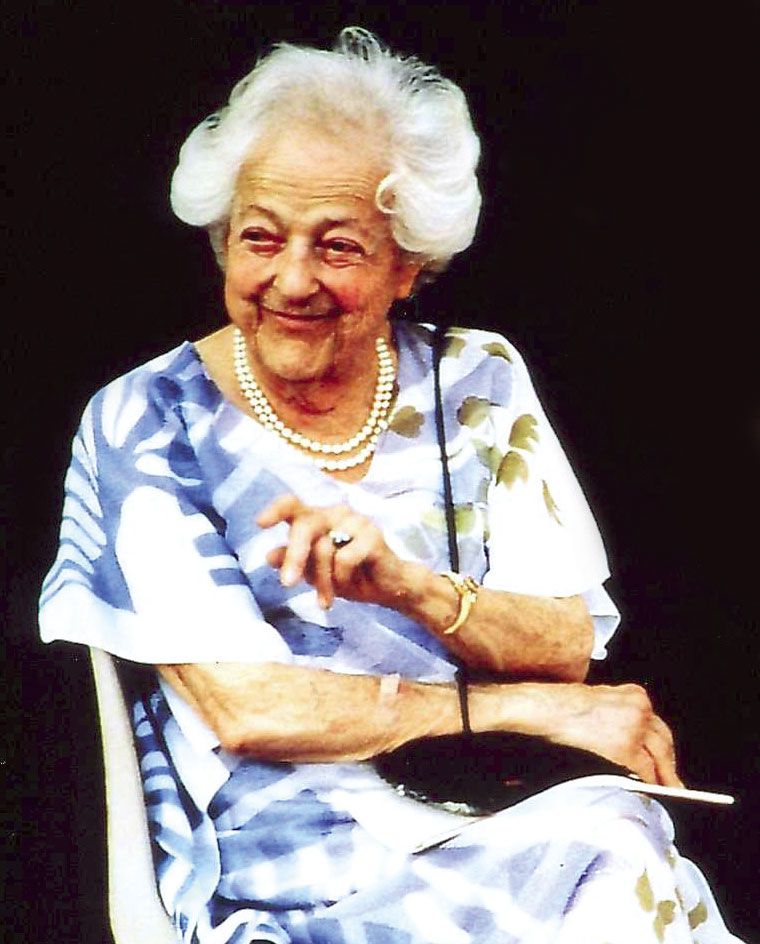
20th-century salvation
The centuries, though, can wear down a building in ways that even a passing army cannot. They held the castle in the family for over 800 years, but the last of the Hautefort family owners died in 1887, and by the beginning of the 20th century, we’re told, the Chateau de Hautefort “had fallen into a pitiful state”. It’s fine furnishings had been carted away, plaster was cracked and falling off in chunks, and floorboards and woodwork were torn up. In 1929, the castle was purchased by the Baron of Bastard (yes, really – there is a long and noble line of Bastards in France), and he and his wife made the restoration of Hautefort their lives' work. When the Baron died in 1957, the Baroness continued the project; she finally moved into the place in 1966.
She didn’t get to enjoy the completed project for long. Two years later, in 1968, the chateau was ravaged by fire. Reports say that only the badly charred exterior walls remained standing. But Madame de Bastard did not give up in the face of this enormous loss. In fact (just as we’ve seen following the recent fire at Notre Dame de Paris), there was a nation-wide outpouring of support for the reconstruction, and she invested the rest of her life (until 1999) along with her personal fortune and money she got from selling off some of her family's art collection to bring the castle back to its current condition.
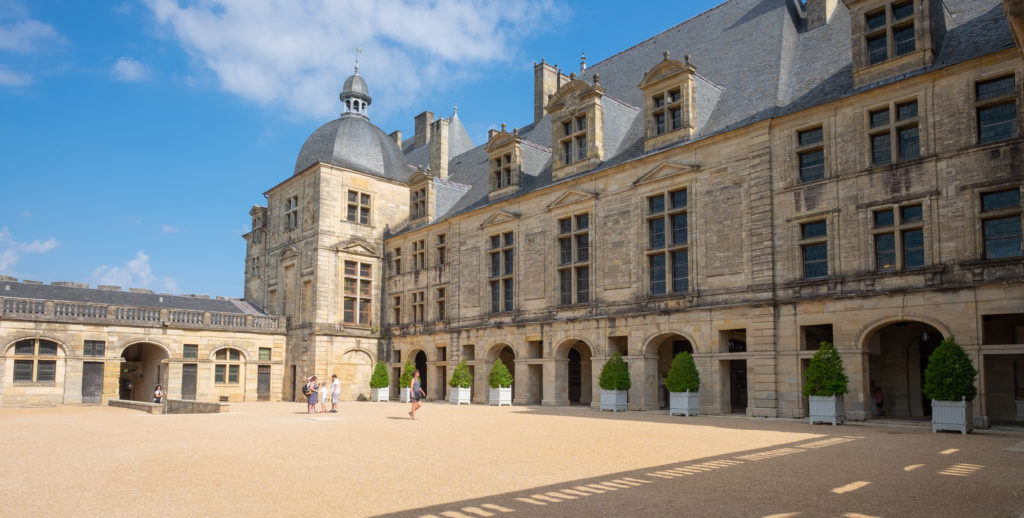
Visiting the castle today
The results of the reconstruction are stunning. I visited on a steamy summer afternoon and spent the first hour wandering through the formal French gardens. The 70-meter-long tunnel of thuja trees opens onto the great lawn, where the air is redolent of magnolias and thousands of flowers.
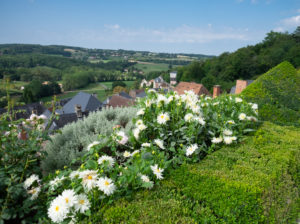
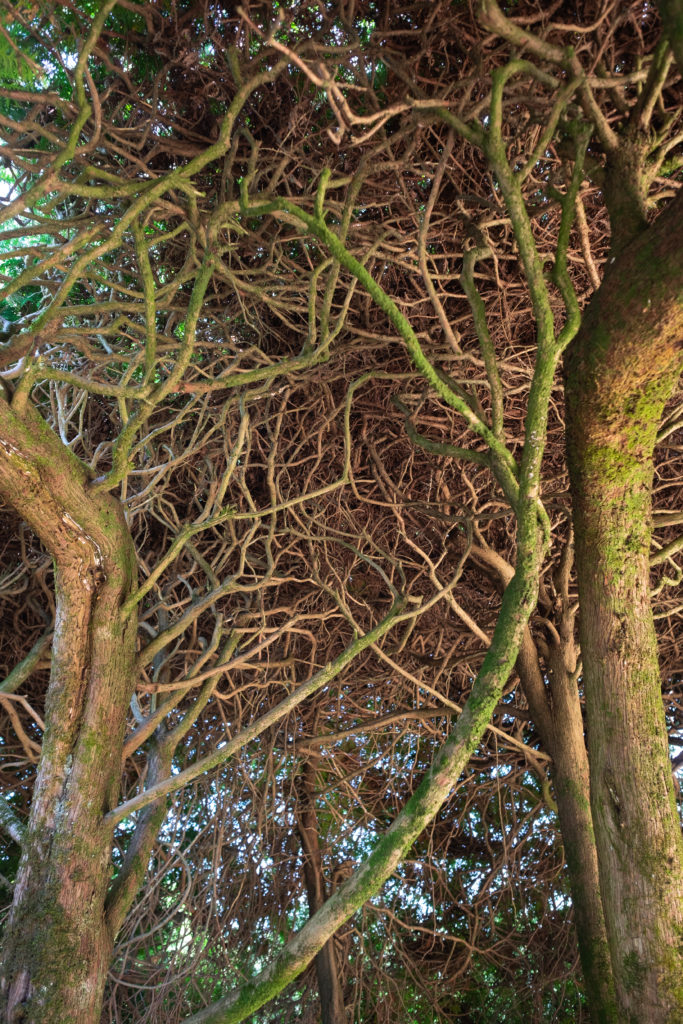
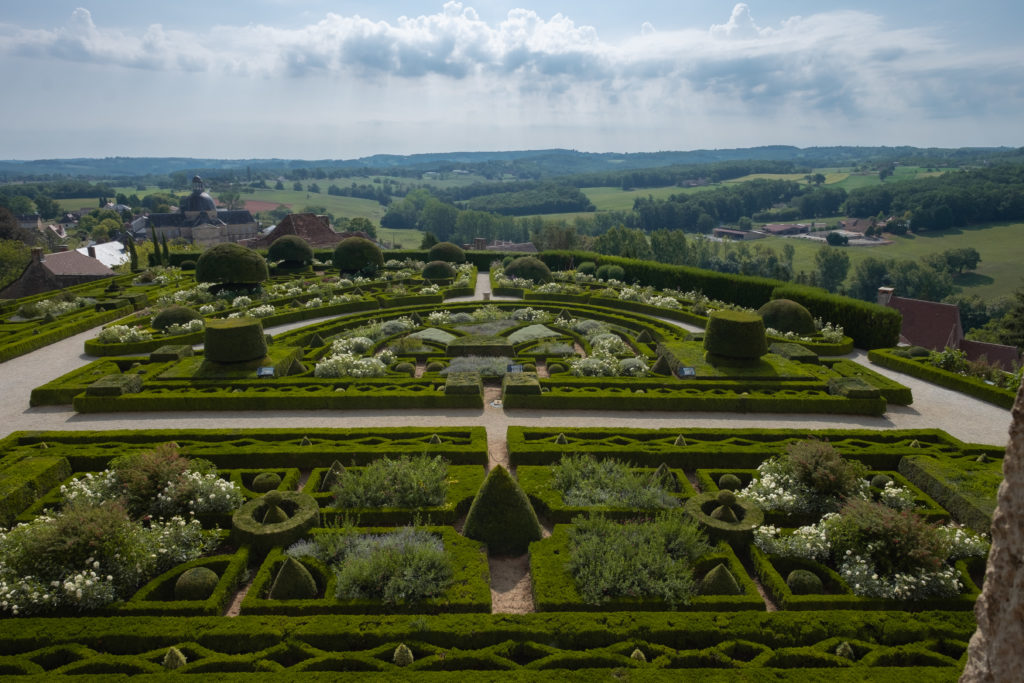
Given the precise formality of the hedge formations, I was a little surprised to find occasional clumps of wild-looking flowers as well as tomatoes and other vegetables growing in the gaps between the other plants. The only comparable place in this part of France, in my experience, is in the extraordinary gardens at Marqueyssac; the boxwoods here at Hautefort, as at Marqueyssac, are tended by hand twice a year.
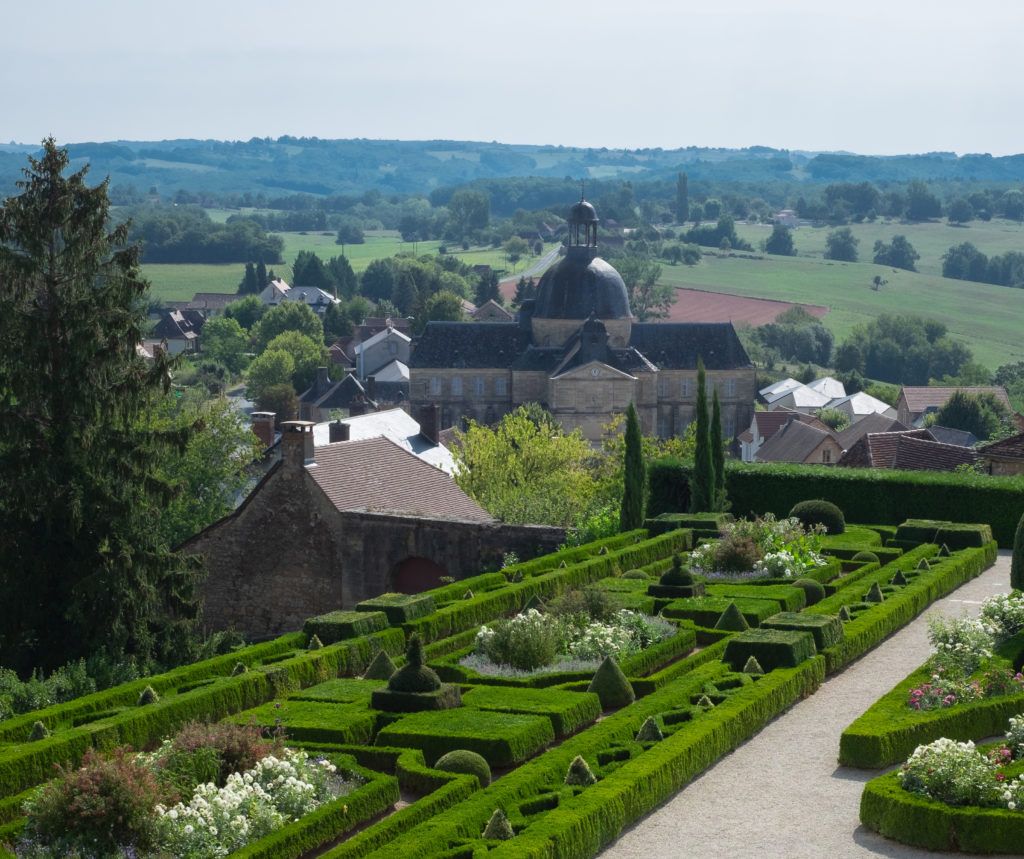
Inside the chateau, fine 17th-century furnishings and works of art have been tastefully arranged to give the sense of a place occupied by an attentive owner. Among my favorites: the richly colored Aubusson tapestries and particularly the finely carved wooden fireplace mantles. In many of the rooms, the furniture groupings look comfortable and homey; I especially appreciated the little displays of family pictures that give a sense this is not just a museum showpiece. You don’t get to see much of the “operational infrastructure” (kitchens, plumbing, workrooms, etc.) that make some other castles interesting, but you do get a sense of what “good living out in the country” might have meant to the Hautefort family over all those centuries.
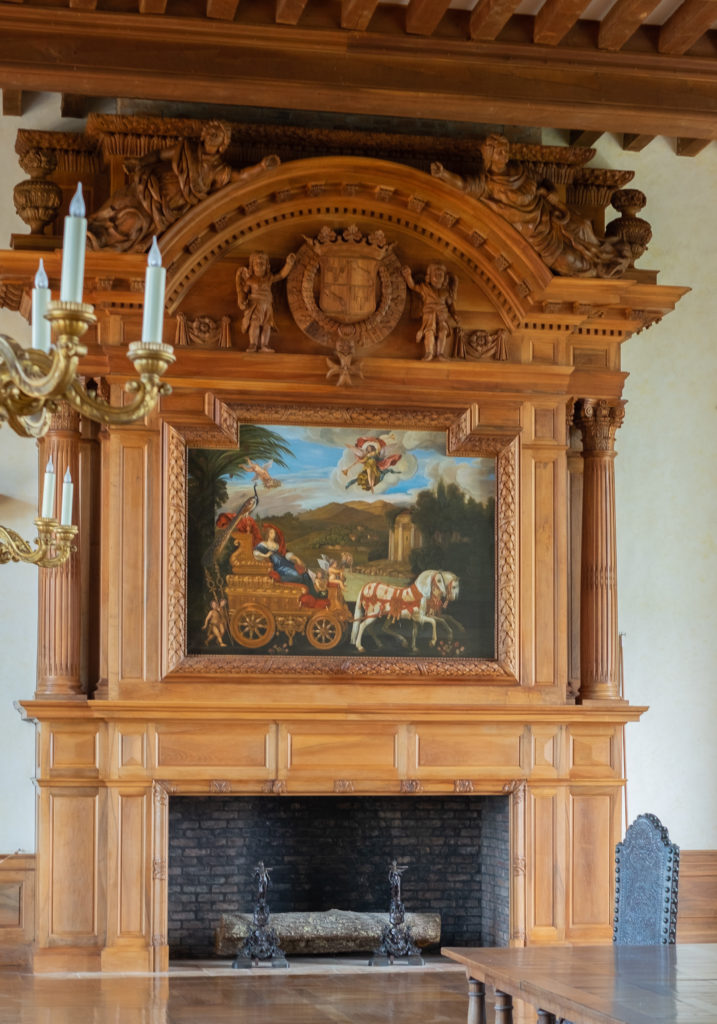
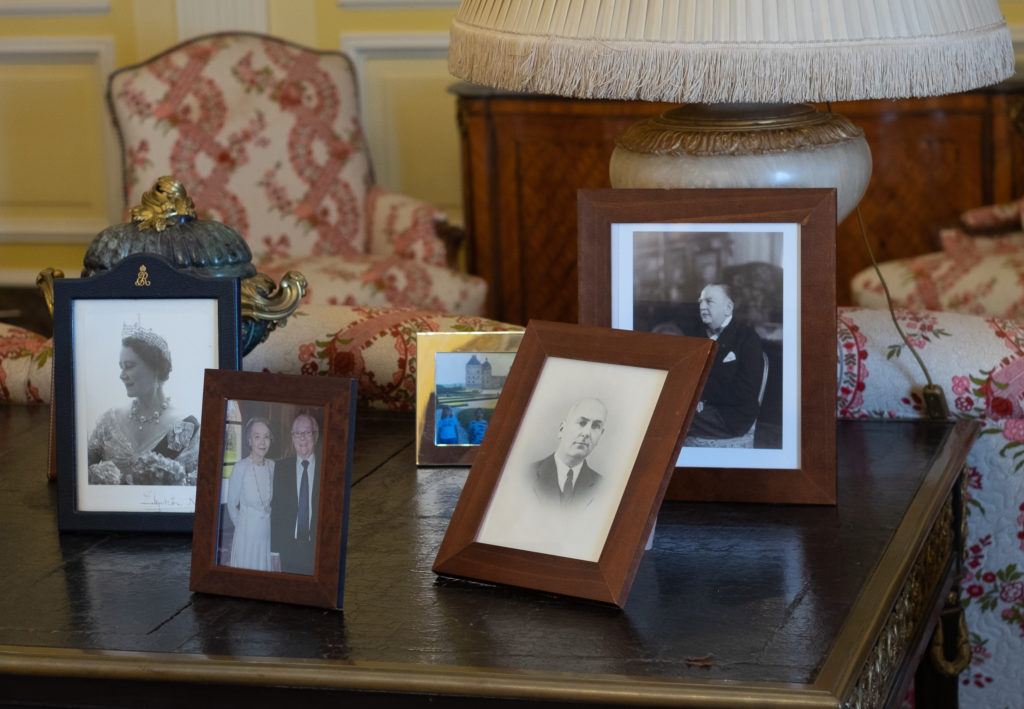
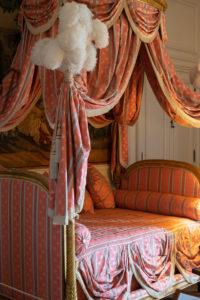
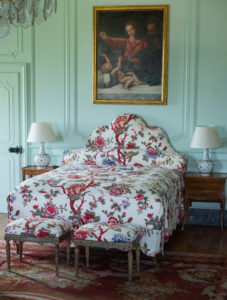
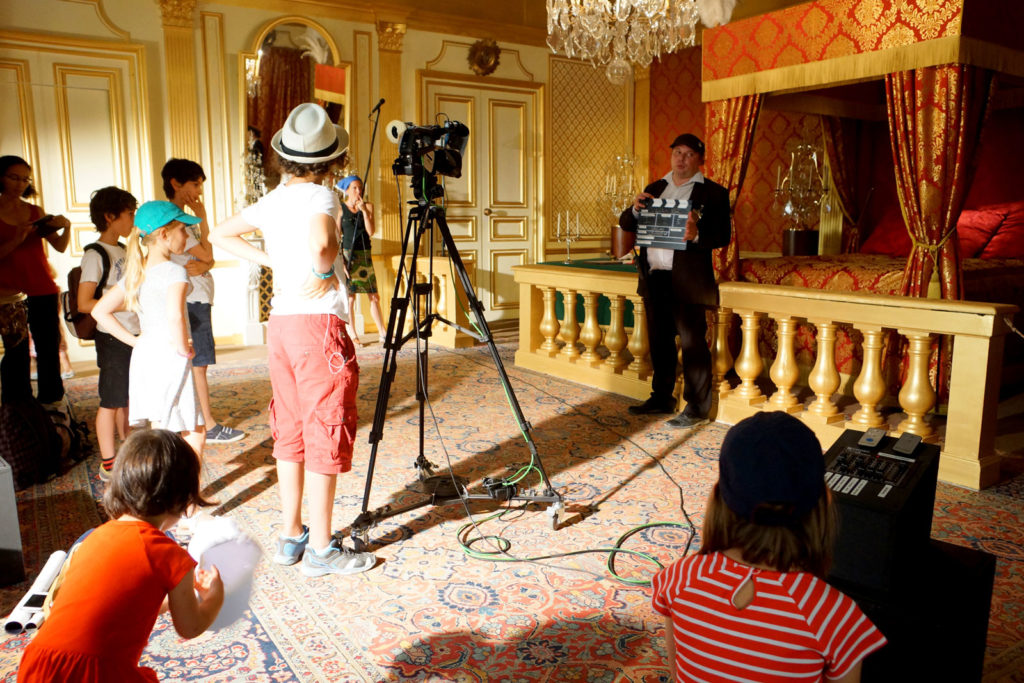
The reconstruction is so complete – and so sumptuous – that the chateau has been used as the setting for more than a dozen films and television shows since the early 1960s (including Drew Barrymore’s 1998 retelling of the Cinderalla story, Ever After), often standing in for the more well-known halls of Versailles or other royal residences. For an extra 2 Euros over the cost of a standard entry, you can tour the reproduction of a movie set inside the castle and an exhibit featuring all the films that have been shot here.
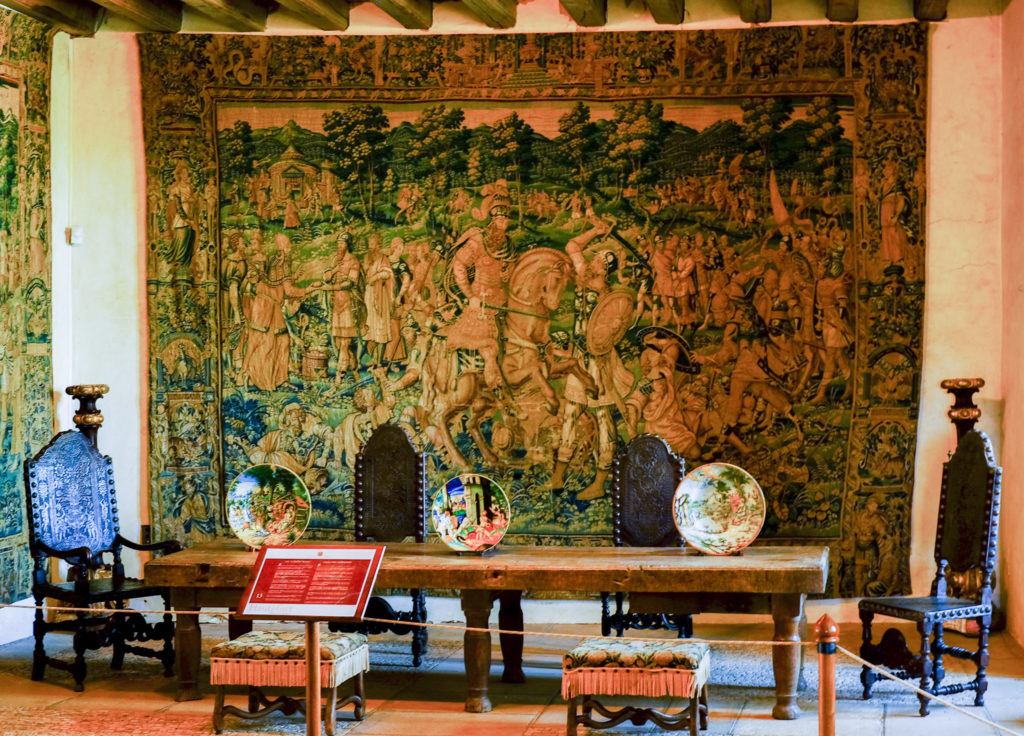
It’s a great day trip out of Sarlat, Périgueux, Limoges, or Brive-la-Gaillarde – and that means its also near many of the other most interesting and beautiful places in the Dordogne region. Add in an hour or two to see the medical museum, and you’ll have a full day’s worth of pleasant exploration in this incredible corner of the deep heart of France!
Have you ever come across a site like this in your travels around France? Please tell us about your experience in the comments below – and, while you’re here, I’d be grateful if you’d click on one of the “share” buttons to pass this post along to someone else!
